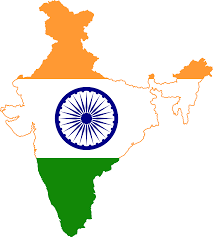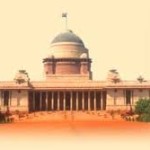Indian Presidential Election and Electoral College
India is the largest democratic republic in the world. The Head of State of the country is the President. Apart from that he holds the position of Commander-in chief of the Indian armed forces.
What is the process of Presidential election in India?
In India, direct elections are held to select members of Legislative assemblies of all the states /union territories and that of Loksabha (house of people) of Parliament of India. The members of the Rajyasabha (upper house) of Parliament of India consist of members elected by members of legislative assemblies and nominated members. All those citizens of a state/ union territory, aged above 18 years have right to cast their votes to select representatives of their constituencies to their respective legislative assemblies/union territories. They can separately cast their votes to select members of their constituencies to Loksabha too. For both these elections state/union territories are divided into different constituencies. In both these cases, people directly participate in the election process.
The President election is an indirect one. His election is through the elected members of both the houses of the Parliament of India and the Legislative Assemblies of all the states of India and the Union Territories.
What are the roles and powers of the President of India?
The President of India is
• The Head of State of India
• Commander in Chief of the India armed forces
• Responsible for appointment of Governors of states, Attorney General , Comptroller and Audit General, Chief Election Commissioners and other Election Commissioners.
• Responsible for appointment of Chief Justice and other judges of Supreme Court of India and other High Courts.
• Ambassadors and high commissioners to other countries, Chairman of Union Public service Commission etc.
• Responsible to protect, defend and preserve the constitution and rule of law
It may, however, be noted that in Indian Parliamentary system, the position of President is a ceremonial one and the Prime Minister being the head of the union cabinet is the chief of executive branch. Thus, Prime Minister is the real head of the Government.
What are the eligibility criteria to be the President of India?
To become the President of India, a person must be
• a citizen of India
• of 35 years of age or above
• qualified to become a member of the Lok Sabha
• shall not hold any office of profit under the Government of India or the Government of any state or under any local or other authority (Serving Vice-President, Governor of any state or serving ministers are excluded).
Who are the members of Electoral College?
The President is chosen by the members of Electoral College. Elected members of both houses of Parliament (M.P) and the elected members (M.L.A) of the State Legislative Assemblies of all States and union territories are the members of the Electoral college.
To contest for the post, a candidate must be recommended by at least 50 electors as proposers and 50 electors as seconders. Each candidate has to make a security deposit of ₹15,000 in the Reserve Bank of India too.
The system of Proportional representation is used for calculations of votes gathered through secret ballot system. The value of vote is based on the population in 1971 and not the current population. This method of calculation will be used till 2026.
The value of vote of one legislator of a state/union territory is calculated by dividing the population of state/ union territory by 1000, which is again divided by the number of legislators from the state. Thus the value of vote per legislature varies from state to state. In the case of members of parliament, the principle is that the total number of votes cast by all members of parliament equals the total number of votes calculated for state/ union territory legislatures.
Value of the vote of an MLA =Total population of the state or union territory based on population as in 1971\(Total number of elected members of the Legislative Assembly x 1000)
Value of an MP vote=The sum of vote value of elected members of all the Legislative Assemblies\The sum of elected members of both the houses of Parliament.
Loksabha has 543 elected members and Rajyasbha has 233 elected members, the total number of elected members being 776. As per the census of 1971, value of each vote of an elected member of parliament is calculated as below:
Value of each vote = 549,495 / 776 = 708.11, rounded to 708
Total value of votes of Parliament = 776 × 708 = 549,408
Total votes of elected legislatures of state and union territories also tally with the same, but vary from state to state.
The winner of the election assumes charge by taking the oath of the President in front of Chief Justice of India. The President resides in Rashtrapati Bhavan situated in Raisina Hill in New Delhi. All About Indian Parliamentary System and General Election
Why is Khadi important for Indians?
NITI Aayog- The National Institution for Transforming India









